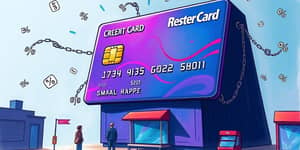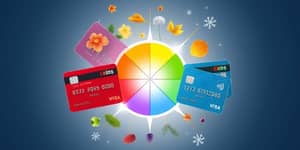
In a world obsessed with big-ticket investments and headlines about massive debts, the humble art of micro-spending stands out as a surprisingly powerful strategy. By intentionally using your credit card for everyday, low-cost purchases and paying them off promptly, you can shape stronger credit habits, reduce interest costs, and unlock valuable rewards.
Micro-spending refers to the practice of making frequent, small purchases—such as that morning coffee, bus fare, or a quick snack—on a credit card. The goal is not to overspend, but to build a pattern where your card becomes your default payment method for routine expenses.
Over time, these habitual transactions can establish consistent, positive payment history and keep your card in active use, reducing the chance you’ll forget a payment or push due dates too close together.
Payment history makes up the largest portion of most credit scoring models. When you pay small monthly balances in full—and do so repeatedly—you prove your reliability to creditors.
Moreover, spreading out charges into multiple micropayments lowers your average daily credit balance. A lower balance translates into lower credit utilization, another crucial scoring factor.
Interest on credit cards is calculated daily, based on your current balance. The more often you reduce that balance, the less interest you pay overall.
Consider a $10,000 balance with a 20% annual rate:
By making 52 weekly payments instead of 12 monthly ones, you effectively make one extra payment per year and save over $100 in interest. These figures illustrate how accelerating debt reduction process pays tangible dividends.
Many credit cards offer bonus categories for everyday spending—groceries, fuel, transit, and dining. Micro-spending strategically in these categories can amplify your earnings.
The psychology of micro-spending hinges on making transactions small enough to remove emotional barriers, yet significant enough to track. This approach helps you maintain control while staying consistent.
Over time, these tiny, manageable habits compound into a robust credit profile—routine and less emotionally fraught than occasional, large expenditures that might trigger impulse buying or regret.
Digital wallets and mobile payment apps have made micro-spending effortless. With just a tap or a scan, small purchases become frictionless, encouraging regular card use.
Features like “round-up” savings programs—where each purchase is rounded up to the nearest dollar and the spare change is transferred to savings—offer an additional layer of financial wellness alongside spending.
By syncing your credit card with budgeting apps, you can categorize micro-transactions in real time, flag unusual activity, and celebrate each debt reduction milestone.
No strategy is without pitfalls. Micro-spending can lead to unexpected debt if you lose track of small charges or carry a balance beyond one billing cycle.
To stay safe, follow these guidelines:
Micro-spending is more than a budgeting gimmick—it’s a holistic approach to credit mastery. By making small purchases, paying them off diligently, and leveraging technology and rewards, you build a powerful engine for financial health.
Begin today by identifying one daily expense—your morning coffee or transit fare—and charge it to your credit card. Automate the payment, watch your balance shrink each week, and witness your credit score climb.
Small actions, repeated consistently, have the potential to create big, positive change in your financial life. Embrace micro-spending and let each cup of coffee be a step toward stronger credit, lower interest costs, and a more secure future.
References













